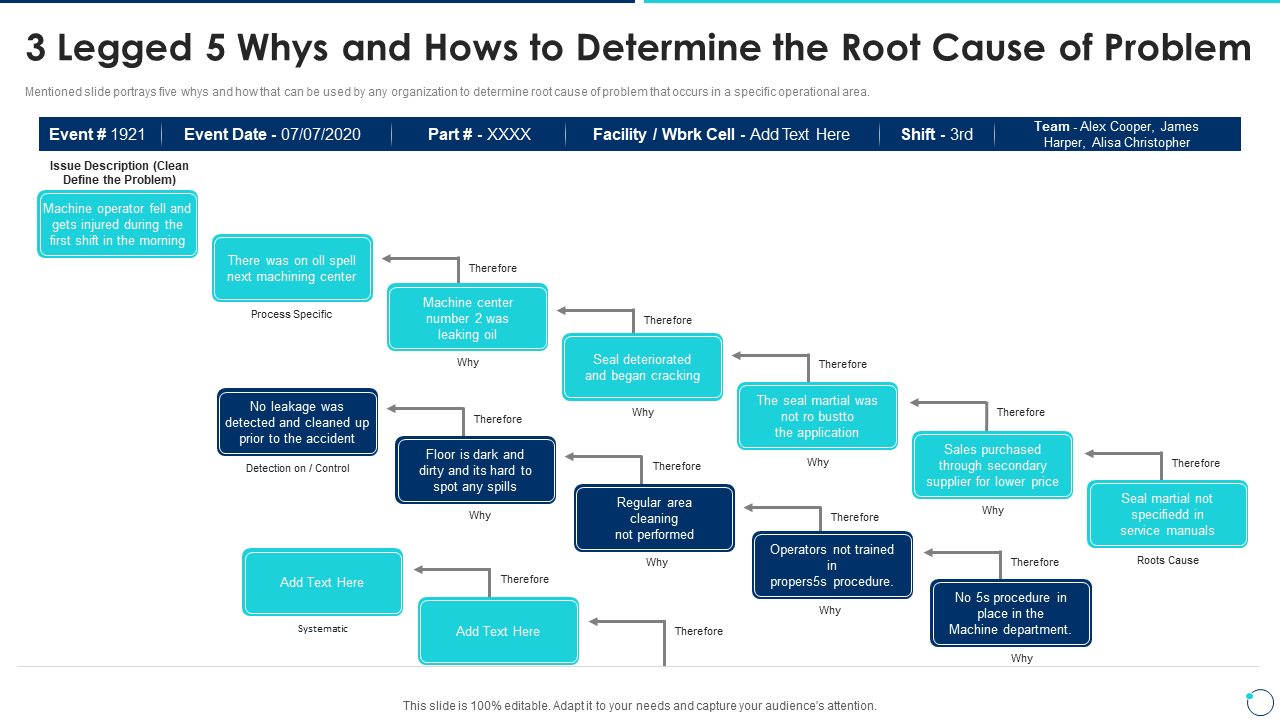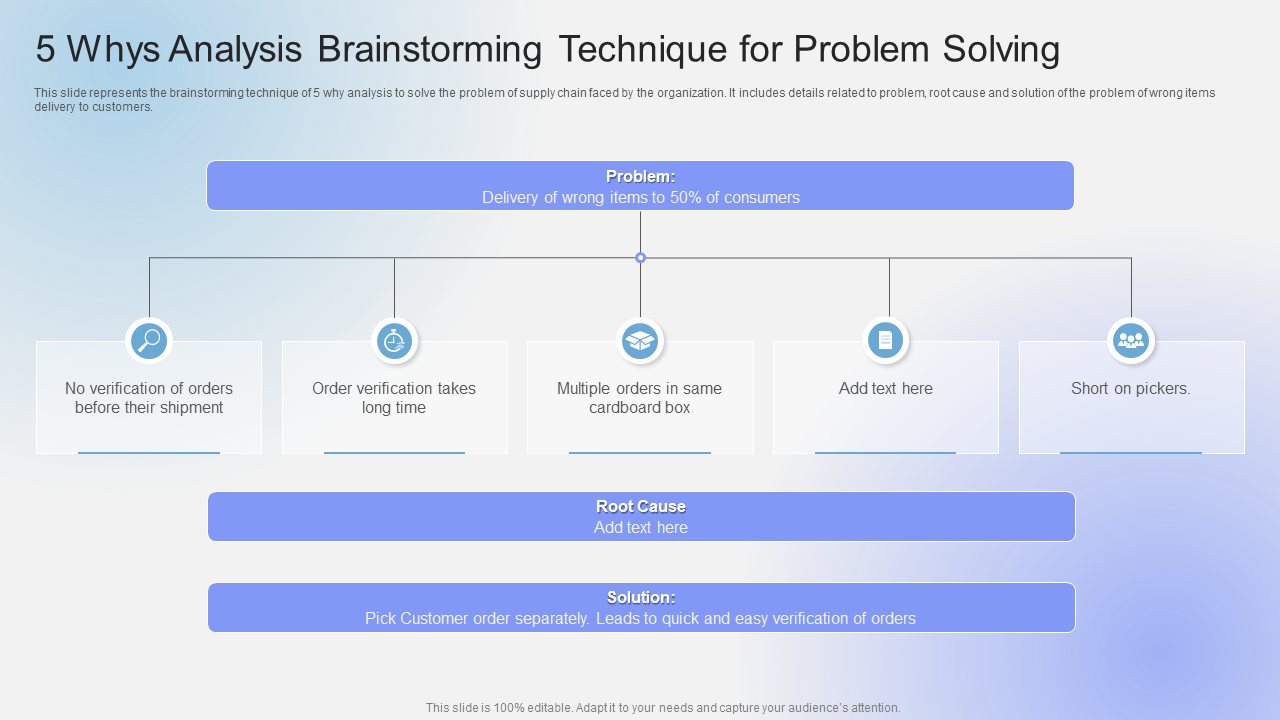Every problem is a gift. Without them, we wouldn't grow. - Tony Robbins
This quote by renowned motivational speaker Tony Robbins highlights the positive perspective that problems are not obstacles to be feared but opportunities for growth and learning.
Problem-solving is a critical skill that can make or break the success of any organization. As businesses face complex challenges and strive for continuous improvement, innovative problem-solving methods are in high demand. One such powerful tool that has emerged as a game-changer is the 5 Whys technique.
The 5 Whys technique is a unique method of scrutinizing a particular problem with the goal of developing an appropriate solution. Developed by Sakichi Toyoda, the mastermind behind Toyota, in the early 20th century, this approach has gained widespread popularity for its simplicity and effectiveness in getting to the root cause of problems.
The 5 Whys serves as a simple but effective tool and has shown to deliver sound results in problem solving, troubleshooting and quality control.
In this blog, we will delve deeper into the world of problem-solving and explore how the 5 Whys technique can revolutionize your approach to tackling challenges head-on.
These templates accommodate your needs, if you’re looking to use this 5 Whys Technique for your internal corporate processes. These templates have an aesthetic, eye-catching design, while also giving users a high degree of flexibility, being fully customizable.
Let’s take a tour of these templates.
Template 1: 3-Legged 5 Whys and How's Collection of Quality Control Templates
Consider this PPT Layout as a management tool for solving problems more efficiently and getting desired results. This slide offers a detailed layout that helps you to chart out the specifics in a problem, deriving the root cause of it. Also present in the slide are some much-needed details pivotal to the situation such as the event date, team names, facility, etc.
Template 2: 5 Whys Analysis Brainstorming Technique for Problem Solving
This template helps you make a simple diagnosis of a problem and devise the right methods to address it. The slide comes with ‘problem’ labelled at the top, followed by the five-stage process that caused the problem. Labelled at the bottom of the slide are root cause and solution. Get this slide and reorient your problem-solving capabilities within this business, boosting efficiency and reducing mismanagement in the process.
CREATE SOLUTIONS
Problem solving becomes simpler and more efficient with the aid of a stringent methodology that has been put to the test. With the help of our five whys templates, you can apply the right strategies to tackle problems. Download our pre-designed customizable slides and bridge the gap between your current and your desired state in business.
Frequently Asked Questions
What is the 5 Whys concept?
The 5 Whys concept is a technique of inquiry employed to determine the links between a particular problem and its cause. The principal goal is ascertaining the fundamental cause of a specific problem by repeatedly asking the question why, five times. For example, if your car won’t start, you can use the five why’s technique in the following manner:
Q: Why won't my car start?
A: Because it has a dead battery.
Q: Why is the battery dead?
A: Because it had been overworked
Q: Why had it been overworked?
A: Because I had been in a hurry and left the engine on
Thus, by asking "Why?" five times, you end up arriving at the central cause of a problem, thereby assisting you in addressing the problem better.
What are the 5 Whys and 5 How's?
The 5 Howes is a technique that complements and builds on the 5 Whys technique by generating possible solutions to the root problem that had been identified. To use the 5 How's technique, first establish the problem that is central to the whole scenario. Then, upon developing a clear ideation of the problem at play, start asking "How?" to generate possible solutions. For example, if you’re facing a problem with getting your car to start, you could ask:
Q: How can I get my car to start?
A: I could jump-start it.
Q: How can I jump-start the car?
A: Using jumper cables to link my car to another with a working battery.
Q: How can I get jumper cables?
A: I could buy them at a store or have a friend lend them to me.
Thus, by asking "How?" five times, you end up being able to synthesize possible solutions to the central problem. You can then compare and contrast the solutions and settle on the one that’s most practical and likely to work.
Together, the 5 Whys and 5 How's methodologies can help single out a root cause to a problem, then tackle and arrest the problem. Using them in tandem, you can develop robust, preventive problem-solving mechanisms.
What are 5 Whys in Six Sigma?
With respect to the concept of Six Sigma, the 5 Whys could be incorporated into the ‘analyze’ phase of the DMAIC (Define, Measure, Analyze, Improve, and Control) methodology. Within the context of analyze phase, where the root cause of a problem is determined, the 5 Whys technique can be instituted to achieve fruitful results.
How do you write 5 Whys?
Here are a few guidelines when writing 5 whys within the framework of the 5 whys method:
- Determine the particulars of the problem and its relationship to the environment. Ask "Why?" five times but extend the process out to more steps than five if the need arises.
- When developing answers to each why in the process, ensure that your answers are based on facts and evidence, not conjecture or guesses.
- Rest your focus on the root cause of the problems and avoid the symptoms.
- Keep asking why until you land at a state where the problem can be sufficiently contained. Institute counter measures to ensure that the problem remains contained and assign responsibilities to the respective teams to keep these measures in place.





 Customer Reviews
Customer Reviews



















